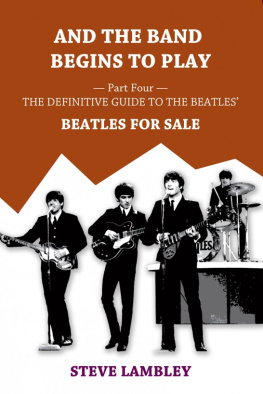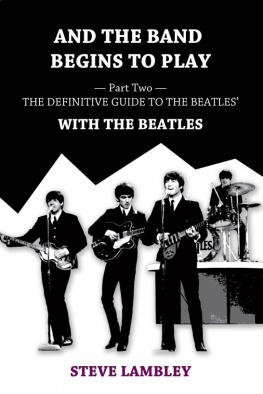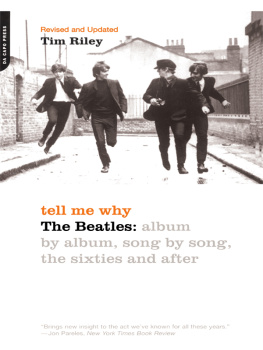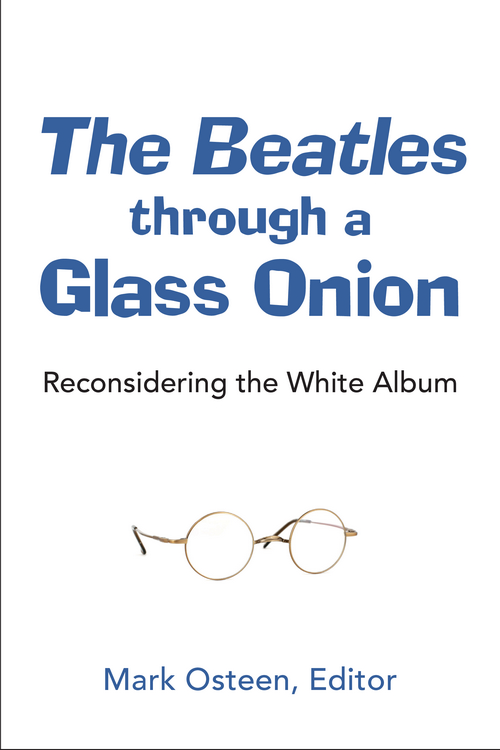
The Beatles through a Glass Onion
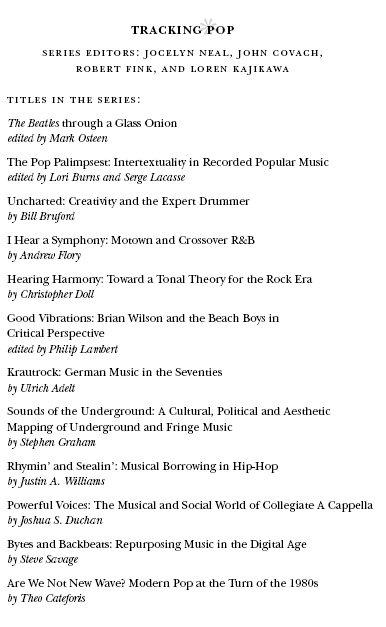
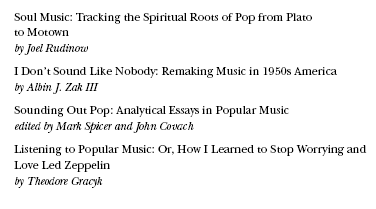
The Beatles through a Glass Onion
Reconsidering the White Album
Mark Osteen, Editor
University of Michigan Press Ann Arbor
Copyright 2019 by Mark Osteen
All rights reserved
This book may not be reproduced, in whole or in part, including illustrations, in any form (beyond that copying permitted by Sections 107 and 108 of the U.S. Copyright Law and except by reviewers for the public press), without written permission from the publisher.
Published in the United States of America by the
University of Michigan Press
Manufactured in the United States of America
A CIP catalog record for this book is available from the British Library.
Library of Congress Cataloging-in-Publication data has been applied for.
ISBN: 978-0-472-07408-2 (Hardcover : alk paper)
ISBN: 978-0-472-12484-8 (ebook)
Page v Contents
Mark Osteen
Michael R. Frontani
Walter Everett
John Kimsey
Kenneth Womack
Russell Reising
Ian Inglis
Anthony D. Villa
Steve Hamelman
John Covach
Stephen Valdez
Vincent P. Benitez
Alyssa Woods and Lori Burns
Adam Bradley
John Covach
Digital materials related to this title can be found on the Fulcrum platform via the following citable URL: https://doi.org/10.3998/mpub.9450783
Page viii Page ix
This is my opportunity to thank every person with whom Ive shared the Beatles music as a listener, lover, or fellow musician. Because that would require pages and pages, I am forced to acknowledge only a few who truly made come on such a joy. Here they are.
My cousin Dave Johnson, with whom I first listened to The Beatles. Life goes on, bra!
My friend Duane Richards, for many stimulating discussions of all things Beatle. Its gonna be all right!
My first college roommate, Jim Parlier, former officer in the Beatles Fan Club, who turned me on to the Fab Fours Christmas records. Were old enough to know better.
My rock bandmates, too numerous to list, with whom I sang and played so many wondrous Beatles tunes. We laid it down for all to see.
Special thanks to my son Cameron, who takes a sad song and makes it better; and to my wife Leslie: the two of us have memories longer than the road that stretches out ahead. Both of you are part of everything I do.
Thanks also to LeeAnn Fields, Mary Francis, and John Covach, who helped me see the plan.
Page x Page 1
The Beatles Through a Glass Onion
Mark Osteen
Umbrella
I came up with calling the next album Umbrella, an umbrella over the whole thing (Miles 1997, 421). So said Paul McCartney about the many songs he and John Lennon had written at the Maharishi Mahesh Yogis ashram in Rishikesh, India. Even then, before the LP called The Beatlesknown to everyone as the White Albumhad been recorded, the band members knew it would be a diverse collection. And so it is. Yet the albums variety is one reason it has long been perceived as the ugly duckling in the Beatles oeuvre, a sprawling potpourri redeemed (perhaps) by the occasional jewels shining through the honey pie. If their 1967 album Sgt. Peppers Lonely Hearts Club Band recalls a modernist literary masterpiecesay, a work by Virginia Woolfthe White Album resembles one of those nineteenth-century novels that Henry James famously dubbed large, loose, baggy monsters, with their queer elements of the accidental and the arbitrary (1921). However, as Ed Whitley (2000) has persuasively shown, The Beatles bagginess, along with its frequent use of bricolage, self-referentiality, fragmentation, and pastiche, is not Victorian but postmodernist.
Not all critics have deemed these traits a virtue; many have found the album maddeningly uneven, its strong songs weakened by fluff Page 2 such as Wild Honey Pie, its virtues weighed down by leaden experiments such as Revolution 9. The albums richness has also yielded a wide disparity in critical responses. For example, Beatles scholar Ian MacDonald judges half the tracks to be poor, their lyrics too often the lazy navel-gazing of pampered recluses (2007, 327). Others have described it as something of a failure and a collection of bits and pieces. Why isnt it better? In his book on the Beatles media image, Michael Frontani sums up the negative consensus answering this question: it is the product of a band in disarray (2007, 169). Yet despite this common reading of the album as a symptom, many Beatles fans and scholars contend that it succeeds precisely because it is such an unruly farrago. Devin McKinney, for instance, finds in it all the confrontation that Pepper lacks and gushes that nothing else in rock and roll has ever come close to it (2003, 237, 225). Others have called it unsurpassed (Quantick 2002, 13) and an unquestionably glorious... tapestry of musical textures (ODell and Neaverson 2002, 13334). One reason for this lack of concord is that the album embodies the bands responses to several significant eventssome personal, some politicalthat occurred between the release of Sgt. Pepper in June 1967 and the White Albums release in November 1968. The essays in this volume analyze these events as they are reflected in the albums songs, which suggest that the Beatles aimed to demonstrate that they were, as Lennon sings in Dear Prudence, part of everything.
That fact, along with the albums emergence during turbulent times; the wealth, diversity, and inconsistency of its songs; and its endurance as a problematic icon of popular culture all suggest that it is ripe for reconsideration. Taking our cue from the third song on the LP, the contributors to this volume examine the White Album and the Beatles as if through a glass onion. The chapters in Part I place the band in the context of their times and trace the musical and personal forces that influenced the album, which include the stay at Rishikesh, producer George Martins departure and return, and the bands use of psychedelic drugs. Part IIs chapters analyze the albums lyrics, characters, arrangements, harmonies, and forms and incorporate analyses of the procedures and progress of the groups three principal songwriters. Part III and the afterword track the albums trail through later years, analyzing how other musicians have appropriated it for their own work. With its broad array of approaches, the collection mirrors the all-encompassing spirit of the White Album itself. But before zooming in, let us deploy a wide-angle lens.
Page 3 Out
By 1968, writes Jonathan Gould (2007, 506), a great many young people (especially in the United States) regarded the Beatles as the quasi-mythic figures depicted in the animated film Yellow Submarine (although the band had virtually no involvement in the movie). Sgt. Peppers unprecedented role as the symphony of the Summer of Love had much to do with that lofty condition. But only a few months later, the number of youths who believed that all you need is love had declined dramatically. Nineteen sixty-eight is often referred to as the year of the barricades because of the numerous protests that broke out across Europe and the United States. As the Vietnam War grew hotter in the wake of the Tet Offensive, the hippie ethos began to seem dated: apparently throwing flowers and getting high wouldnt change the world after all. For nearly two months in early 1968, the Beatles were ensconced at the Maharishis ashram, seeking enlightenment through meditation. In chapter 1, Frontani traces the evolution of the Beatles status within the counterculture in 1968. He shows how the band now emerged as a safer alternative to the radicals and to groups like the Rolling Stones and details how their relevance was boosted by
Next page


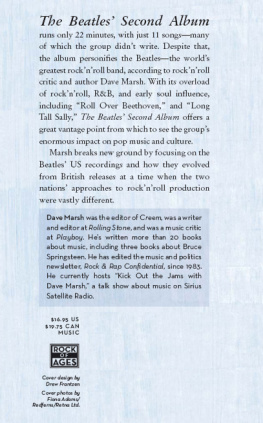
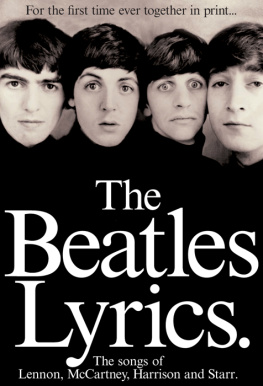
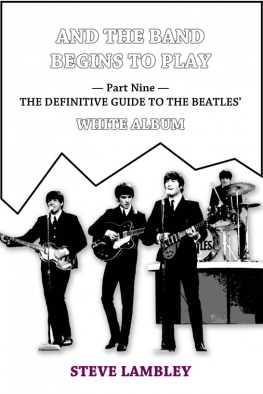
![Lambley - And the Band Begins to Play: [Part9 The Definitive Guide to the Beatles White Album]](/uploads/posts/book/213743/thumbs/lambley-and-the-band-begins-to-play-part9-the.jpg)
![Lambley - And the Band Begins to Play: [Part6 The Definitive Guide to the Beatles Rubber Soul]](/uploads/posts/book/213742/thumbs/lambley-and-the-band-begins-to-play-part6-the.jpg)
![Lambley - And the Band Begins to Play: [Part1 The Definitive Guide to the Beatles Please Please Me]](/uploads/posts/book/213741/thumbs/lambley-and-the-band-begins-to-play-part1-the.jpg)
